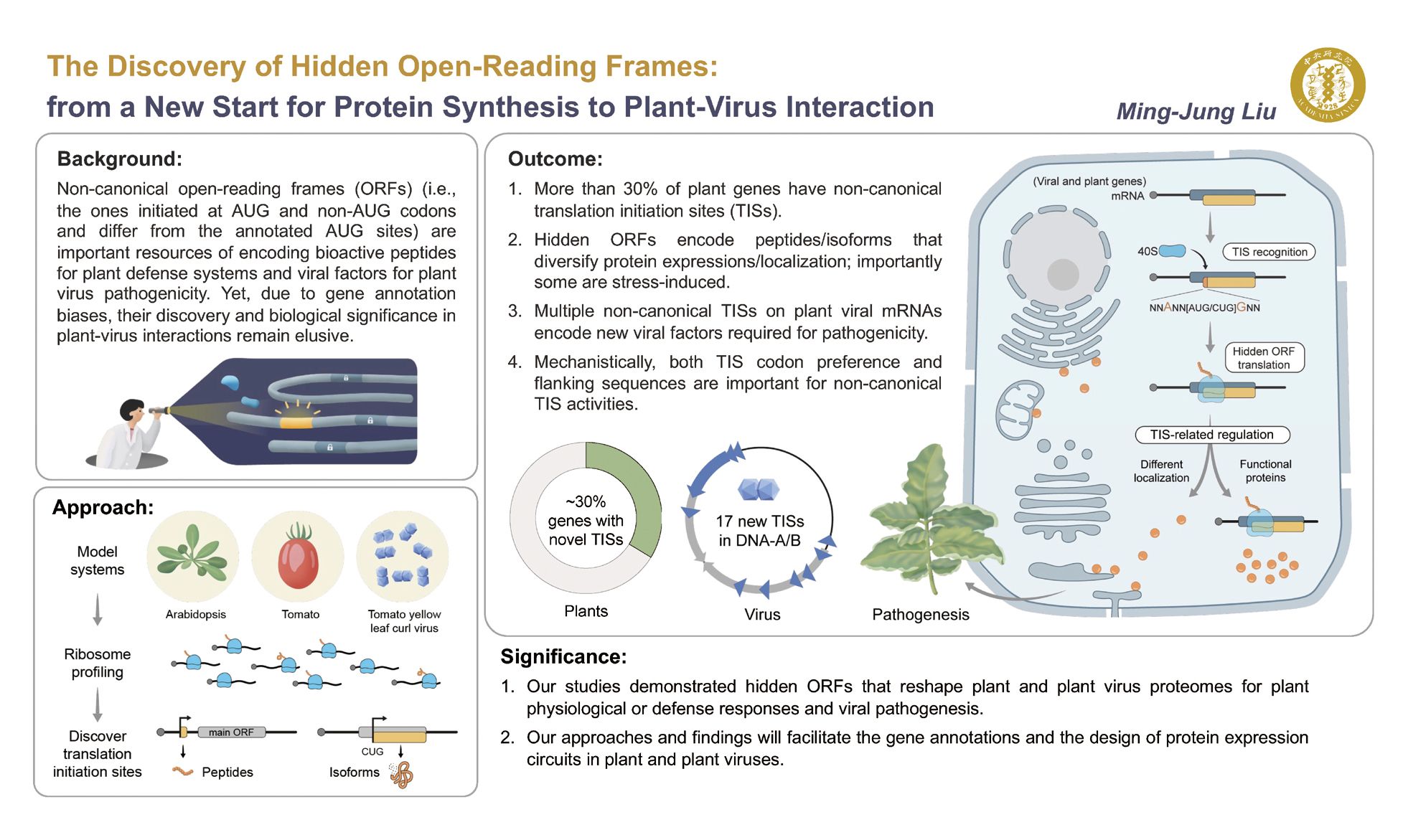劉明容 Ming-Jung Liu

中央研究院 農業生物科技研究中心助研究員
學歷
- 國立中興大學/ 中央研究院分子暨生物農業科學學程博士(2012)
- 國立台灣大學植物科學研究所碩士(2006)
- 國立中央大學生命科學系學士(2004)
經歷
- 中央研究院農業生物科技研究中心副研究員(2022/10 ~ 迄今)
- 中央研究院農業生物科技研究中心助研究員(2016/5 ~ 2022/10)
- 美國密西根州立大學博士後研究員(2013/3 ~ 2016/1)
個人勵志銘
Follow the scientific curiosity and act like yourself but be a better one.
整合分子及資料計算生物學 研究隱藏的蛋白質編碼基因
The first time that I was excited about plant biology was when I was identifying heatinsensitive mutants during my undergraduate studies . From observing phenotypes to unveiling the underlying mechanisms, I have been fascinated with plant stress responses and the scientific thinking behind. I got a solid Master’ s training in plant physiology and molecular biology in Dr. Hsu-Liang Hsieh’ s lab at National Taiwan University. During my graduate studies at Dr. Shu-Hsing Wu’ s lab in Academia Sinica, I utilized both molecular biology and high-throughput techniques to study, when plant seedlings are first exposed to light, how genes are differentially translated for the tunable protein expressions. Then, I carried out my postdoctoral research in Dr. Shin-Han Shiu’ s lab at Michigan State University, where I was exposed to multiple aspects of data mining, machine learning and evolution to study the dynamics of histone binding on DNA sequences for plant stress-response gene expressions. The joint experimental and bioinformatics training not only enriched my toolkit but also inspired me greatly to assess biological questions from different angles.
Since I started my own research group in Academia Sinica in 2016, my group has been focused how selective gene translations modulate protein expressions for plant defense responses and plant virus pathogenesis. By integrating computational and experimental approaches, we focus particularly on exploring novel translation initiation sites (TISs) and hidden genes in plant and virus genomes and elucidate the mechanistic basis of how these novel TIS are specified and the biological basis of how these hidden genes function in plant-virus interactions. Our significant findings suggest the non-conventional translational strategies are commonly used in both plants and plant viruses to expand the genome coding capacity and increase their flexibility in adapting to changing environments. The knowledge gained from these studies provides opportunities to develop defensive strategies for application in agriculture.

得獎感言
I am extremely grateful about the award, which is a great recognition of my work, and also to the NSTC to encourage young scientists to pursuit the excellence in science. I also sincerely thank my lab members for their contribution to our research findings and also the colleagues in the Agricultural Biotechnology Research Center and Academia Sinica that have developed a research environment of stimulating/ exchanging of scientific ideas. Without their support, I would not have received this honor.

